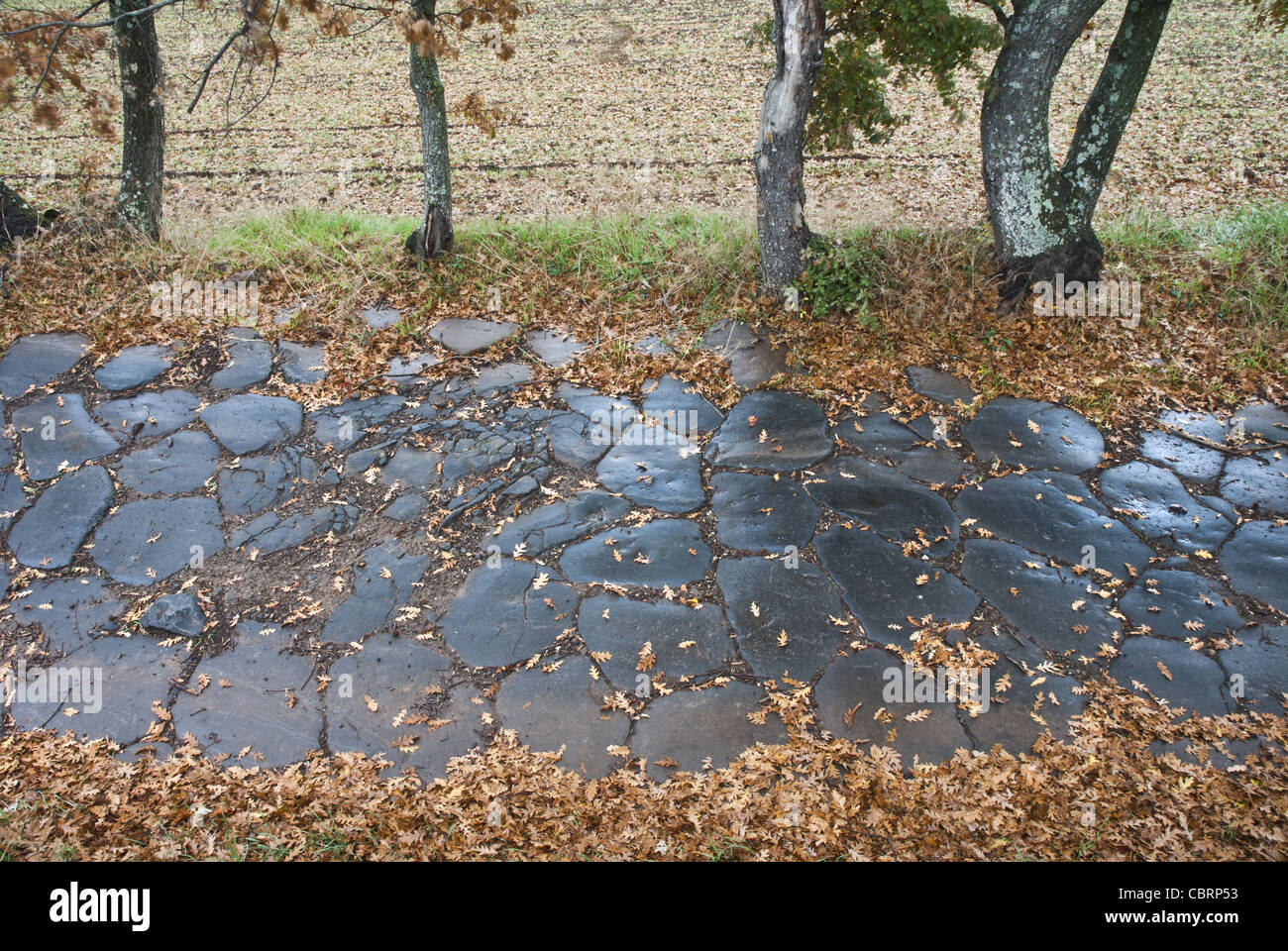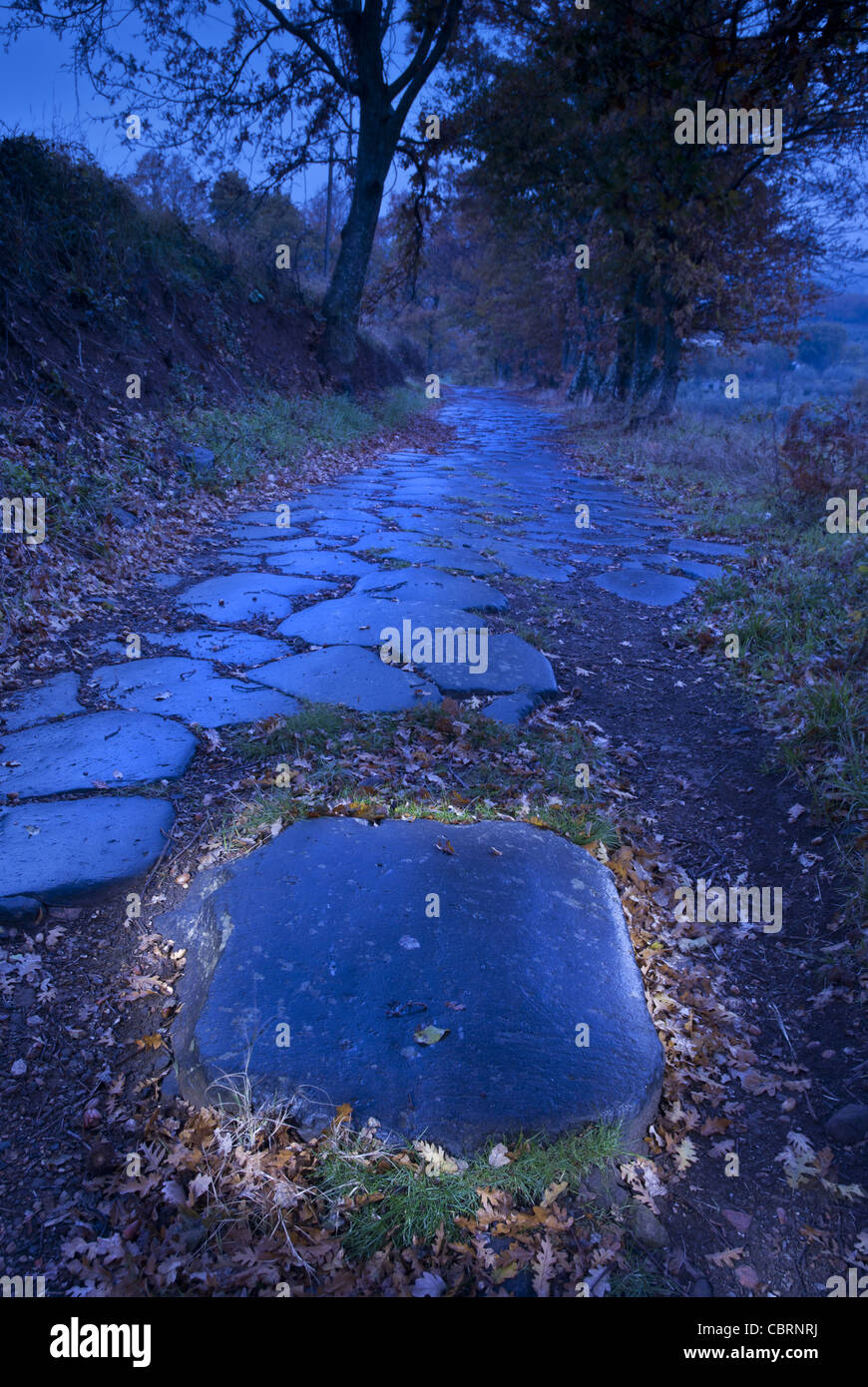There’s something magical about Via Cassia Italy, a route that feels like it’s been plucked straight from the pages of history books and postcards alike. Imagine driving or walking along a road that’s been around since Roman times, where every stone tells a story and every bend offers a new view of Tuscany’s breathtaking landscapes. This isn’t just any road—it’s an experience, a journey through time and culture that every traveler dreams of. Whether you’re a history buff, a nature lover, or simply someone who appreciates the finer things in life, Via Cassia has got you covered.
Via Cassia Italy is more than just a road; it’s a symbol of Italy’s rich heritage and its enduring charm. Stretching from Rome to Florence, this ancient route connects some of the most iconic cities and towns in Italy. It’s not just about getting from point A to point B—it’s about the journey itself, the little detours, the hidden gems, and the stories that unfold along the way. So, buckle up, grab your map, and let’s dive into what makes Via Cassia so special.
Now, I know what you’re thinking—why should you care about Via Cassia? Well, my friend, this isn’t just another touristy road. This is where history meets modernity, where ancient ruins stand alongside picturesque vineyards, and where every step feels like a nod to the past. If you’re planning a trip to Italy or just dreaming about one, Via Cassia should be on your radar. Trust me, you don’t want to miss out on this one.
Read also:Tiara Scanda The Extraordinary Life And Journey With Her Husband
Table of Contents
- The Rich History of Via Cassia
- The Route of Via Cassia: From Rome to Florence
- Key Landmarks Along Via Cassia
- Charming Towns and Villages
- Nature and Scenic Beauty
- Culinary Delights Along the Way
- Travel Tips for Exploring Via Cassia
- Best Seasons to Visit
- Cultural Experiences
- Modern Via Cassia
The Rich History of Via Cassia
Let’s rewind the clock for a sec, shall we? Via Cassia Italy isn’t just any old road—it’s an ancient Roman masterpiece. Built way back in 187 BC, this road was originally named after the Roman censor Quintus Cassius Longinus, who had a thing for building roads. Back in the day, it was all about connecting Rome to key areas in Etruria, which is now modern-day Tuscany. So, yeah, this road has been around for a hot minute.
Fast forward a couple of thousand years, and Via Cassia is still standing strong, albeit with a few upgrades here and there. The original Roman road has evolved into a modern highway, but don’t let that fool you—there are still plenty of ancient ruins and historical sites scattered along the route. It’s like a living museum, except you don’t have to pay an entrance fee.
Now, if you’re into history, you’ll be happy to know that Via Cassia played a crucial role in the Roman Empire. It wasn’t just a road—it was a lifeline, connecting Rome to its northern territories and facilitating trade, communication, and military movements. And let’s not forget the cultural exchange that happened along the way. This road was a melting pot of ideas, traditions, and innovations, and its legacy lives on to this day.
Why Via Cassia Matters Today
But wait, why does Via Cassia still matter in the 21st century? Well, for starters, it’s a gateway to some of Italy’s most stunning landscapes and cultural treasures. From the rolling hills of Tuscany to the historic cities of Rome and Florence, this road offers a glimpse into Italy’s soul. Plus, it’s a great way to escape the tourist crowds and explore the lesser-known parts of the country. So, whether you’re a history geek or just someone who loves a good road trip, Via Cassia has something for you.
The Route of Via Cassia: From Rome to Florence
Alright, let’s talk about the nitty-gritty—the actual route of Via Cassia. This road stretches approximately 250 kilometers (about 155 miles) from Rome to Florence, cutting through the heart of Italy’s most beautiful regions. The journey starts in Rome, where you can soak in the grandeur of the Eternal City, and ends in Florence, the cradle of the Renaissance. But the real magic happens in between.
As you travel along Via Cassia, you’ll pass through the provinces of Rome, Viterbo, Siena, and Florence. Each province has its own unique charm, from the thermal baths of Viterbo to the vineyards of Siena. And let’s not forget the countless small towns and villages that dot the landscape, each with its own story to tell.
Read also:Period Nirvana Quiz Your Ultimate Guide To Understanding And Embracing Your Cycle
Now, here’s the thing—Via Cassia isn’t just one road. There are actually several variations of the route, depending on which part of Italy you want to explore. Some parts of the road have been modernized, while others remain as they were centuries ago. So, whether you’re into high-speed highways or scenic backroads, Via Cassia has got you covered.
Driving vs. Walking: Which Should You Choose?
One of the coolest things about Via Cassia is that you can experience it in different ways. If you’re short on time or prefer the convenience of a car, driving is a great option. You’ll get to see a lot more in a shorter amount of time, and you can stop wherever you want. Plus, there’s something about cruising down an open road with the windows down that just feels right.
But if you’re looking for a more immersive experience, consider walking or cycling along Via Cassia. This way, you’ll get to really soak in the surroundings, smell the flowers, and hear the birds chirping. It’s a slower pace, sure, but sometimes slower is better, especially when you’re surrounded by such beauty.
Key Landmarks Along Via Cassia
Now, let’s talk about some of the must-see landmarks along Via Cassia. Trust me, you don’t want to miss these. First up, we’ve got the famous Etruscan tombs, scattered throughout the region. These ancient burial sites offer a fascinating glimpse into the lives of the Etruscans, who were the original inhabitants of this area before the Romans came along.
Then there’s the Abbey of San Galgano, a stunning medieval monastery perched on a hill. This place is like something out of a fairy tale, with its crumbling walls and serene atmosphere. It’s the perfect spot for a picnic or just a quiet moment of reflection.
And let’s not forget the thermal baths of Bagno Vignoni, where you can soak your worries away in natural hot springs. These baths have been around for centuries and are said to have healing properties. So, if you’re feeling a little stressed or sore from all the walking, this is the perfect place to relax.
Hidden Gems Along the Way
Of course, these are just a few of the many landmarks along Via Cassia. There are also plenty of hidden gems waiting to be discovered. For example, the little village of Montefollonico, nestled in the hills of Tuscany, offers breathtaking views and a taste of authentic Italian life. And then there’s the ancient city of Orvieto, with its towering cathedral and labyrinth of underground caves.
So, whether you’re into history, nature, or just good vibes, Via Cassia has something for everyone. Just keep your eyes peeled—you never know what you might stumble upon.
Charming Towns and Villages
Alright, let’s talk about the towns and villages along Via Cassia. These little gems are what make the journey so special. Each one has its own personality, from the bustling market towns to the quiet hillside villages. Let me introduce you to a few of my favorites.
First up, we’ve got Radicofani, a medieval town perched on a hill. This place is like a postcard come to life, with its cobbled streets and ancient walls. If you’re into wine, you’re in luck—Radicofani is surrounded by vineyards, and the local wine is absolutely delicious.
Then there’s Chianciano Terme, a spa town known for its mineral-rich waters. This place has been attracting visitors for centuries, and it’s easy to see why. The thermal baths are a must-visit, and the town itself is charming, with its colorful buildings and lively atmosphere.
And let’s not forget Montepulciano, the “Pearl of Tuscany.” This town is famous for its wine, particularly Vino Nobile di Montepulciano, which is said to be one of the best in Italy. If you’re a wine lover, this is definitely a stop you won’t want to miss.
What Makes These Towns Special?
What sets these towns apart from the rest? Well, for starters, they’re all steeped in history and culture. Each one has its own unique story to tell, whether it’s about the Etruscans, the Romans, or the Medici family. Plus, they’re all surrounded by stunning landscapes, from rolling hills to lush forests.
But beyond the history and scenery, these towns offer something else—authentic Italian life. You’ll get to see how locals live, eat, and work, and you might even pick up a few Italian phrases along the way. So, whether you’re into culture, food, or just soaking in the atmosphere, these towns have got you covered.
Nature and Scenic Beauty
Now, let’s talk about the nature and scenic beauty along Via Cassia. This road is surrounded by some of the most breathtaking landscapes in the world. From the rolling hills of Tuscany to the lush forests of Umbria, there’s no shortage of stunning views.
One of the highlights is the Crete Senesi, a unique landscape of clay hills that looks like something out of a dream. This place is like a moonscape, with its soft, rolling mounds and dramatic shadows. It’s the perfect spot for a photo op or just a quiet moment of contemplation.
Then there’s the Val d’Orcia, a UNESCO World Heritage Site known for its picturesque landscapes. This is where you’ll find those iconic Tuscan cypress trees, standing tall against the backdrop of golden fields and blue skies. It’s the kind of scenery that makes you want to grab your camera and start snapping.
Best Spots for Nature Lovers
If you’re a nature lover, there are plenty of spots along Via Cassia that you’ll want to explore. The Parco Naturale Regionale di Monte Rufeno, for example, is a great place for hiking and wildlife watching. This park is home to a variety of animals, from deer to birds of prey, and it’s a great way to get up close and personal with nature.
And let’s not forget the forests of Umbria, where you can explore ancient woodlands and discover hidden waterfalls. It’s like stepping into a fairy tale, with its towering trees and mysterious paths. So, if you’re looking for a bit of adventure, this is the place to be.
Culinary Delights Along the Way
Alright, let’s talk about the food. Because, let’s be real—no trip to Italy is complete without indulging in some delicious cuisine. Via Cassia offers a smorgasbord of culinary delights, from hearty Tuscan dishes to delicate Umbrian pastries.
One of the must-try dishes is pici, a thick, hand-rolled pasta that’s typically served with a rich tomato sauce or wild boar ragù. It’s the kind of food that sticks to your ribs and warms your soul. And don’t forget about the local cheeses, particularly pecorino, which is made from sheep’s milk and has a rich, nutty flavor.
Of course, no meal in Italy is complete without a glass of wine. Along Via Cassia, you’ll find some of the best vineyards in the country, producing everything from Chianti to Brunello di Montalcino. So, whether you’re a red wine fan or a white wine enthusiast, you’re sure to find something to your liking.
Where to Eat Along Via Cassia
Now, where should you eat along Via Cassia? Well, that depends on what you’re in the mood for. If you’re looking for a fine dining experience, head to one of the many Michelin-starred restaurants in the region. These places offer a taste of Italy’s finest cuisine, with a modern twist.
But if you’re


